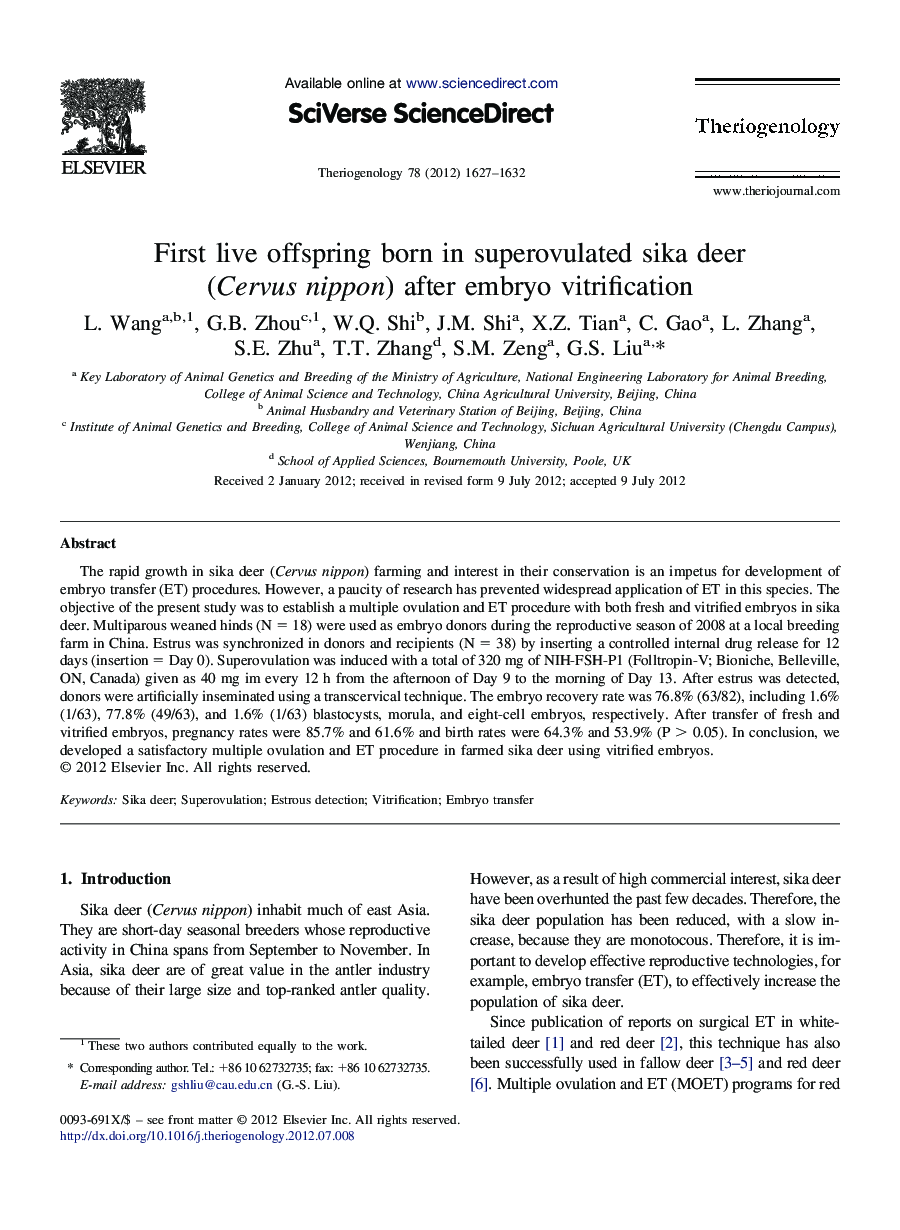| Article ID | Journal | Published Year | Pages | File Type |
|---|---|---|---|---|
| 10892654 | Theriogenology | 2012 | 6 Pages |
Abstract
The rapid growth in sika deer (Cervus nippon) farming and interest in their conservation is an impetus for development of embryo transfer (ET) procedures. However, a paucity of research has prevented widespread application of ET in this species. The objective of the present study was to establish a multiple ovulation and ET procedure with both fresh and vitrified embryos in sika deer. Multiparous weaned hinds (N = 18) were used as embryo donors during the reproductive season of 2008 at a local breeding farm in China. Estrus was synchronized in donors and recipients (N = 38) by inserting a controlled internal drug release for 12 days (insertion = Day 0). Superovulation was induced with a total of 320 mg of NIH-FSH-P1 (Folltropin-V; Bioniche, Belleville, ON, Canada) given as 40 mg im every 12 h from the afternoon of Day 9 to the morning of Day 13. After estrus was detected, donors were artificially inseminated using a transcervical technique. The embryo recovery rate was 76.8% (63/82), including 1.6% (1/63), 77.8% (49/63), and 1.6% (1/63) blastocysts, morula, and eight-cell embryos, respectively. After transfer of fresh and vitrified embryos, pregnancy rates were 85.7% and 61.6% and birth rates were 64.3% and 53.9% (P > 0.05). In conclusion, we developed a satisfactory multiple ovulation and ET procedure in farmed sika deer using vitrified embryos.
Related Topics
Life Sciences
Agricultural and Biological Sciences
Animal Science and Zoology
Authors
L. Wang, G.B. Zhou, W.Q. Shi, J.M. Shi, X.Z. Tian, C. Gao, L. Zhang, S.E. Zhu, T.T. Zhang, S.M. Zeng, G.S. Liu,
